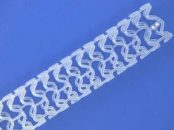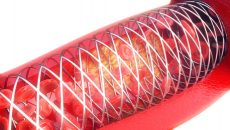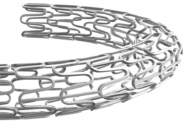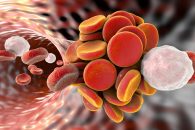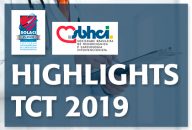Dual antiplatelet therapy (DAPT) one month after angioplasty with Xience stent was approved in Europe for patients with high risk of bleeding. The CE Mark approval comes after studies Xience 28 and Xience 90 are published. Immediately after authorization, Abbot was fast to announce what they consider to be the shortest approved scheme with the most…
Biodegradable Polymer Myth Also Debunked for ACSs
During TCT 2020 a preview of the results of the comparison of drug-eluting stents (DES) with biodegradable-polymer vs. durable-polymer in patients with acute coronary syndrome (ACS) was presented. The fine print and the final paper for HOST-REDUCE-POLYTECH-ACS are now published, and they lower the expectations set on biodegradable polymers. In patients with ACS undergoing angioplasty, biodegradable-polymer…
Last Bastion of Bare Metal Stents Finally Falls
Multiple studies have shown the safety and efficacy of drug eluting stents (DES) in patients with high risk of bleeding. Only one last bastion of bare metal stents (BMS) was left standing: vein grafts. With controversial evidence and different physiopathology, many still argued against DES in saphenous vein grafts. This multicenter study randomized patients with…
Current DES Performance: Is There Room for Improvement?
Head-to-head comparison of current drug-eluting stents (DES) showed contradictory results that led us to believe, for years, that we had reached a plateau. This feeling was also fostered by the disappointment caused by Absorb and bioresorbable-polymer stents. However, this recent article featured in JACC Interventions shows a light at the end of the tunnel with…
More Evidence for Short Term DAPT: Approaching “the Class Effect”
Patients at high risk of bleeding undergoing coronary angioplasty with Orsiro stent can be considered for a short dual antiplatelet scheme. These data come from the SMART-CHOICE study recently published in JAHA, adding the Orsiro stent to the list of devices supporting 3-month DAPT. This study included 2993 patients undergoing coronary angioplasty randomized to 3…
In-Stent Restenosis Treatment: Meta-Analysis of 10 Randomized Studies
The best strategy to treat in stent restenosis continues to be a dilemma. A new drug eluting stent (DES) seems to be the simplest treatment, even though it adds metal layers that will make it harder and harder to retreat. Drug coated balloons might be a viable alternative seeing as it seems to enable retreatment,…
TCT 2020 | The Myth of Biodegradable Polymers Seems to Have Come to an End
This is the largest and newest study to compare drug eluting stents with durable polymers vs. biodegradable or bioresorbable polymers. As is usually the case, the theory clashes with reality. The study has shown that the polymer does not seem to play an important role in the performance of drug eluting stents, or at least…
ISAR-TEST-5: 10 años de los DES con polímero vs sin polímero
After 10 years, unstable or chronic coronary patients revascularized with drug-eluting stents (DES) had similar, very good outcomes regardless of whether the DES did or did not have a polymer, according to the ISAR-TEST-5 study, recently published in J Am Coll Cardiol. The 10-year device-oriented endpoints occurred in 43.8% of patients treated with a polymer-free sirolimus-eluting…
BIOFLOW V: Ultrathin Struts Confirm their Benefits
For several years we have been testing new devices that have introduce changes with respect to their predecessors in the hope they will bring clinical benefits. And so, the different generations of drug eluting stents came about (DES) even though we found ourselves stuck in the second generation, with the classical everolimus eluting stents. All…
Onyx ONE: More Options for Patients at High Risk for Bleeding
Since November 2015, when the LEADERS FREE was published in NEJM, polymer-free drug coated stents had undoubtedly been the best treatment for patients at high risk of bleeding. The benefit was owed to the safety and efficacy of the polymer-free biolimus coated stent (also called umirolimus) vs. bare metal stents in the context of just…
TCT 2019 | MODEL U-SES: More Devices for High Risk of Bleeding and Short DAPT
Courtesy of SBHCI. This study tested the safety of dual antiplatelet therapy (DAPT) after only three months of bioresorbable polymer sirolimus DES implantation (Ultimaster). Secondary end point was following with P2Y12 inhibitor monotherapy after the first 3 months compared with aspirin. It included 1695 patients treated with sirolimus eluting Ultimaster receiving 3-month DAPT. After the…

